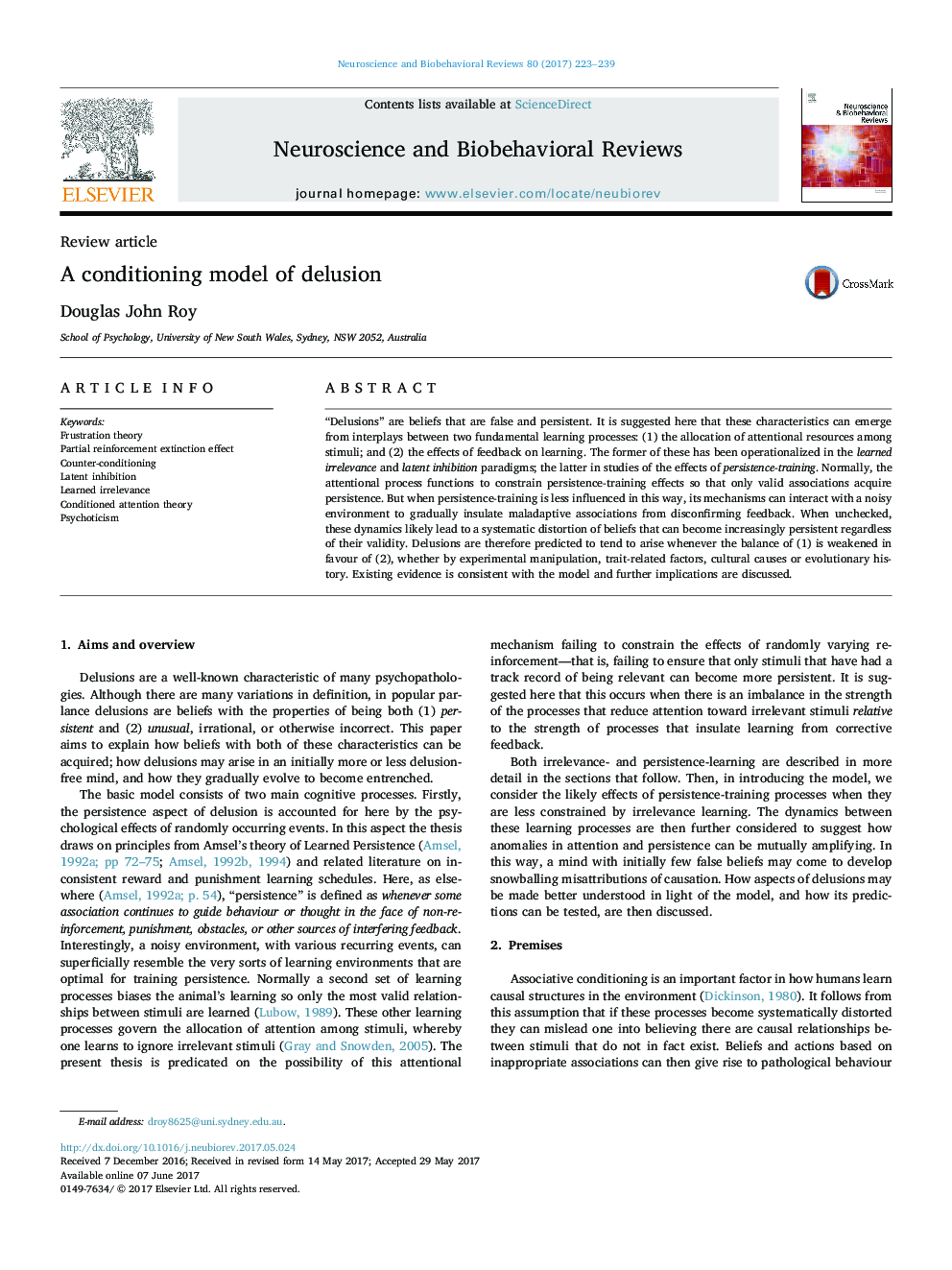| کد مقاله | کد نشریه | سال انتشار | مقاله انگلیسی | نسخه تمام متن |
|---|---|---|---|---|
| 5043445 | 1475292 | 2017 | 17 صفحه PDF | دانلود رایگان |
- Defines the key elements of “delusion” and identifies the key features that any model of delusion must account for.
- Suggests a model of how delusions can arise in an initially more or less healthy mind.
- The basic model is embedded in a firm empirical framework based on well-known paradigms in the behavioral neuroscience and learning literature.
- Proposes predictions regarding delusion and personality, neurological, pharmacological, behavioral and cultural factors.
“Delusions” are beliefs that are false and persistent. It is suggested here that these characteristics can emerge from interplays between two fundamental learning processes: (1) the allocation of attentional resources among stimuli; and (2) the effects of feedback on learning. The former of these has been operationalized in the learned irrelevance and latent inhibition paradigms; the latter in studies of the effects of persistence-training. Normally, the attentional process functions to constrain persistence-training effects so that only valid associations acquire persistence. But when persistence-training is less influenced in this way, its mechanisms can interact with a noisy environment to gradually insulate maladaptive associations from disconfirming feedback. When unchecked, these dynamics likely lead to a systematic distortion of beliefs that can become increasingly persistent regardless of their validity. Delusions are therefore predicted to tend to arise whenever the balance of (1) is weakened in favour of (2), whether by experimental manipulation, trait-related factors, cultural causes or evolutionary history. Existing evidence is consistent with the model and further implications are discussed.
135
Journal: Neuroscience & Biobehavioral Reviews - Volume 80, September 2017, Pages 223-239
